Abstract
The biochemical, serological, and epidemiological characteristics of 95 strains of Serratia marcescens isolated at the Boston City Hospital were examined. Several strains were shown to be endemic, and the majority of isolates were cultured from urine or respiratory secretions. Serratia species were highly resistant to polymyxin B and the cephalosporins, and various proportions were also resistant to other antibiotics including kanamycin, but all of the isolates were sensitive to gentamicin. The appearance of resistance to kanamycin and nalidixic acid among endemic strains was demonstrated. The nosocomial nature of Serratia infections, particularly those involving the urinary tract, was confirmed. Many clinical bacteriology laboratories currently fail to identify the nonpigmented strains.
Full text
PDF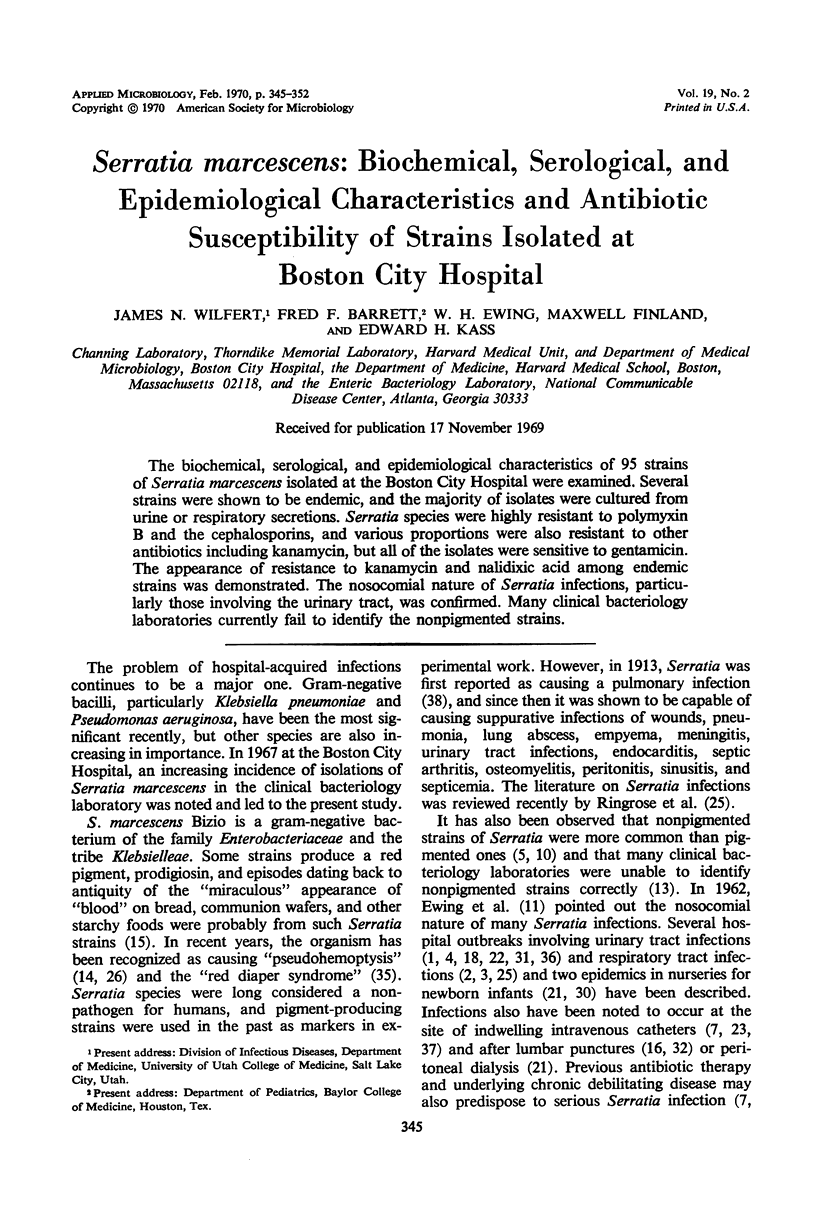
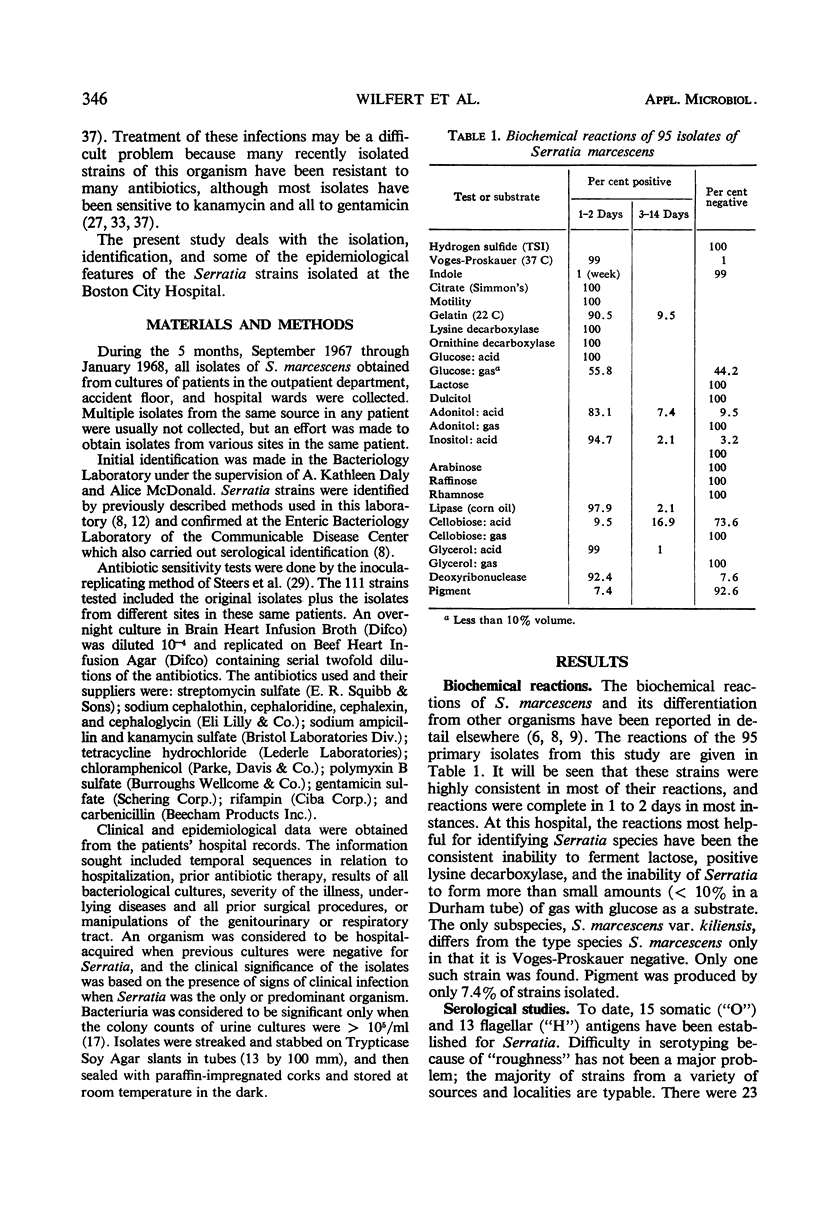
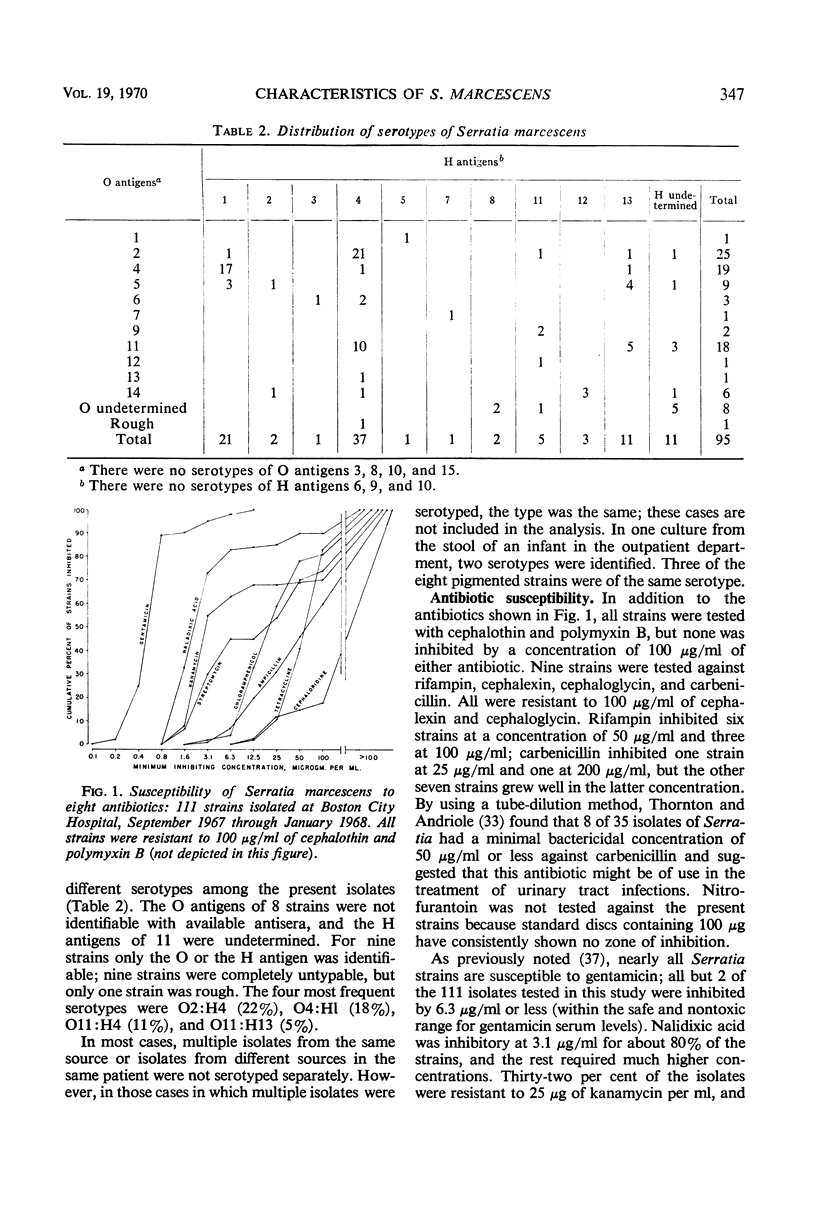
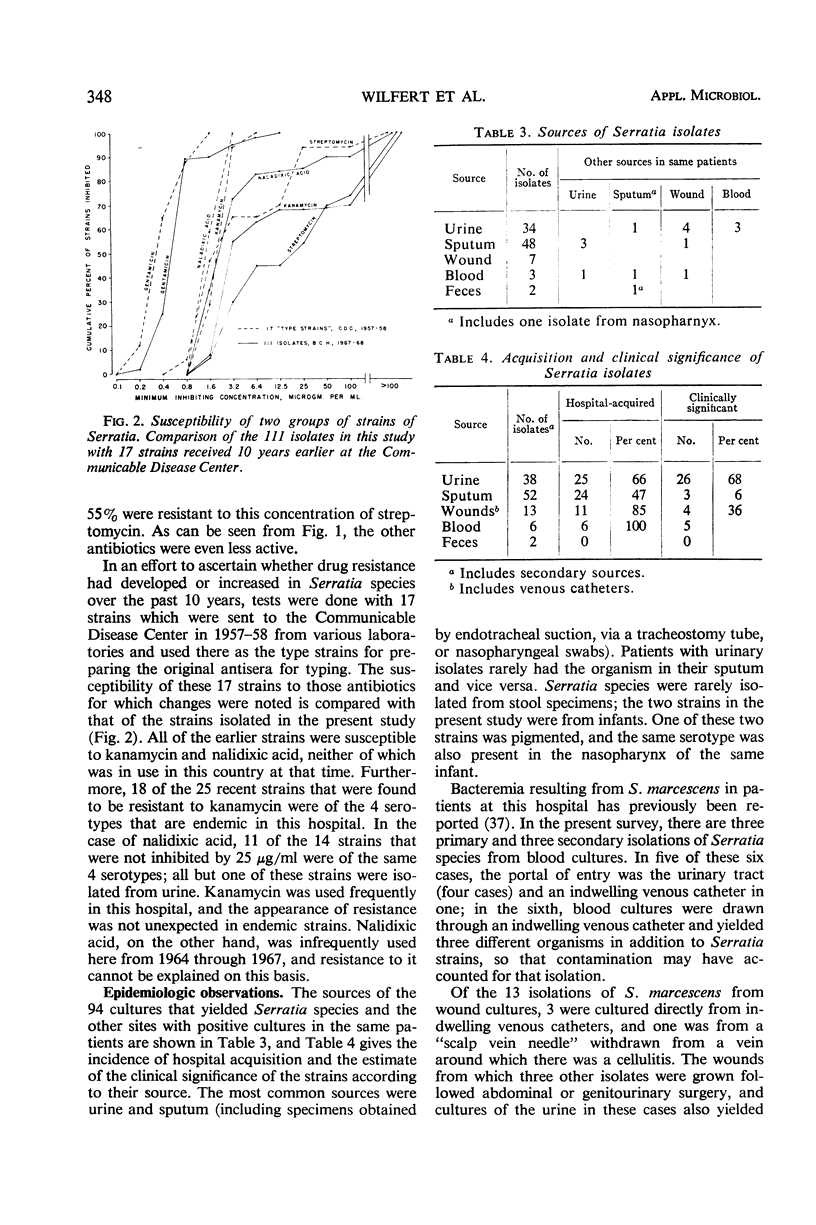
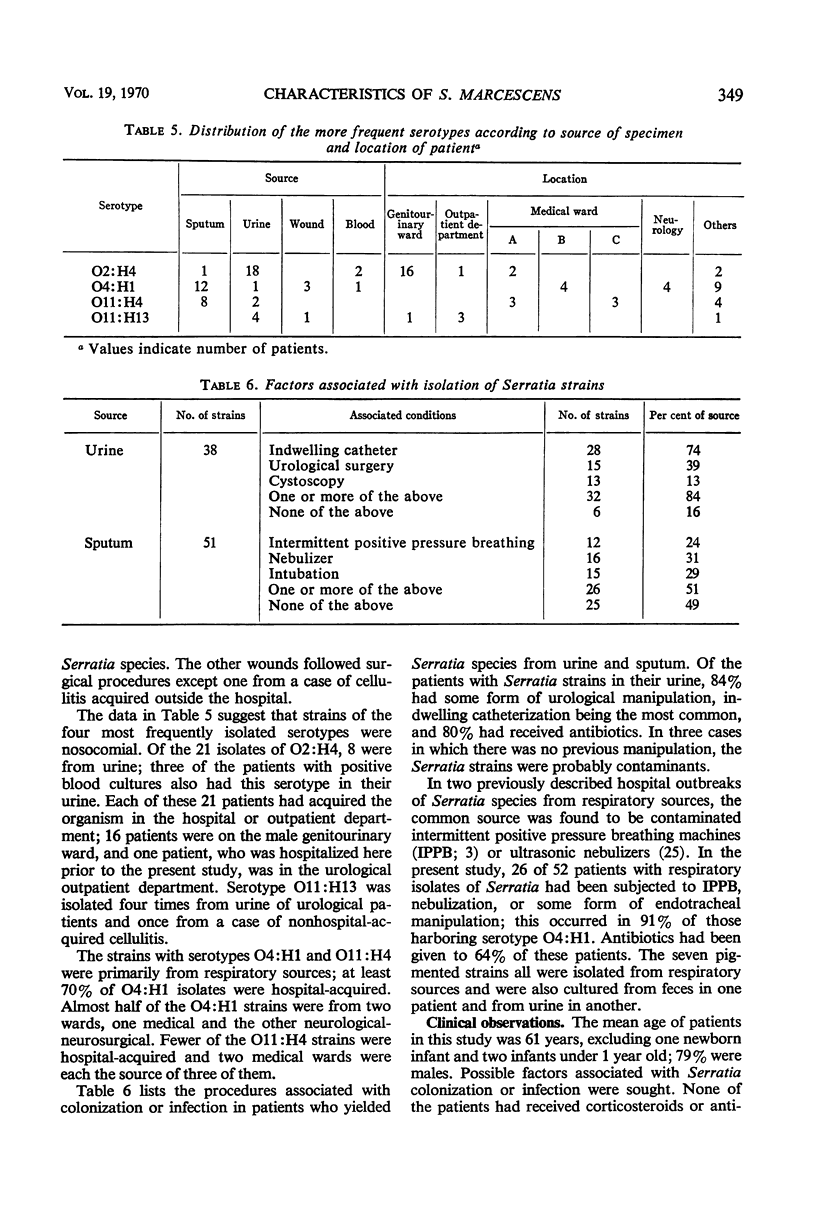
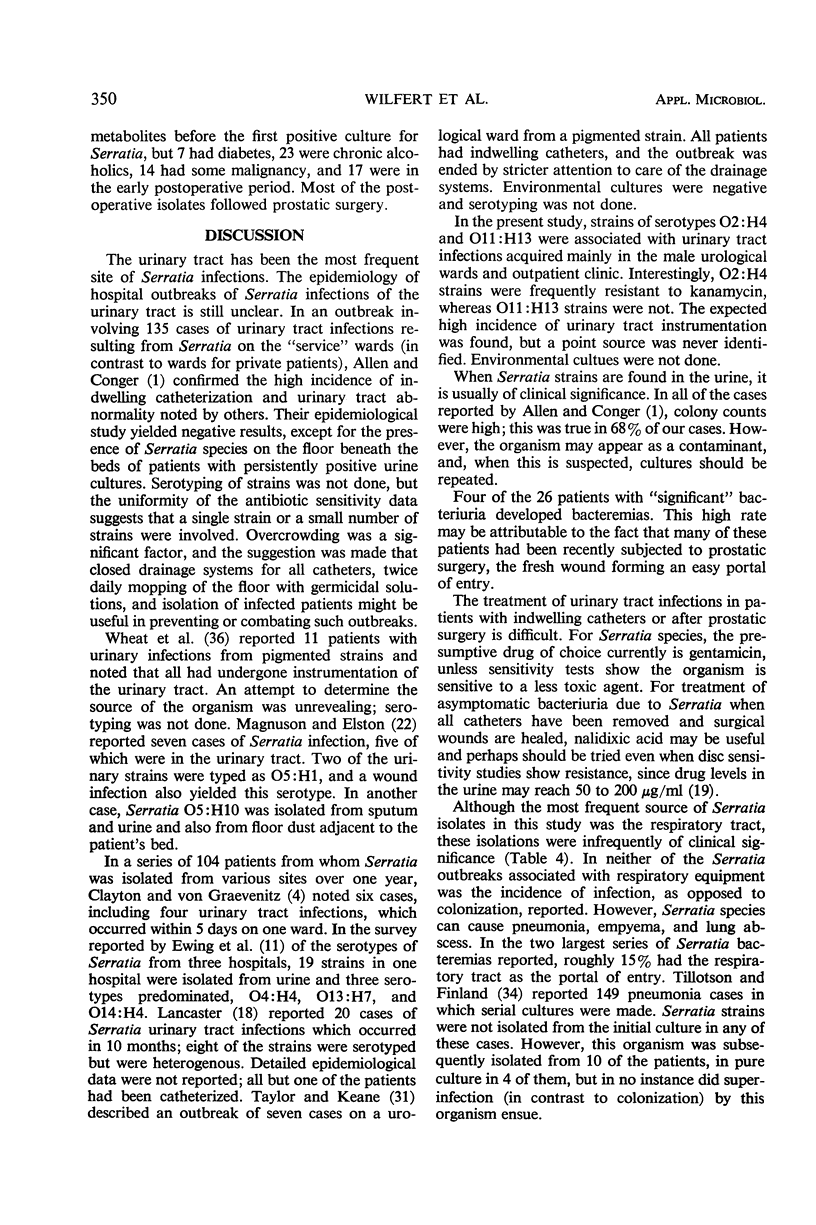
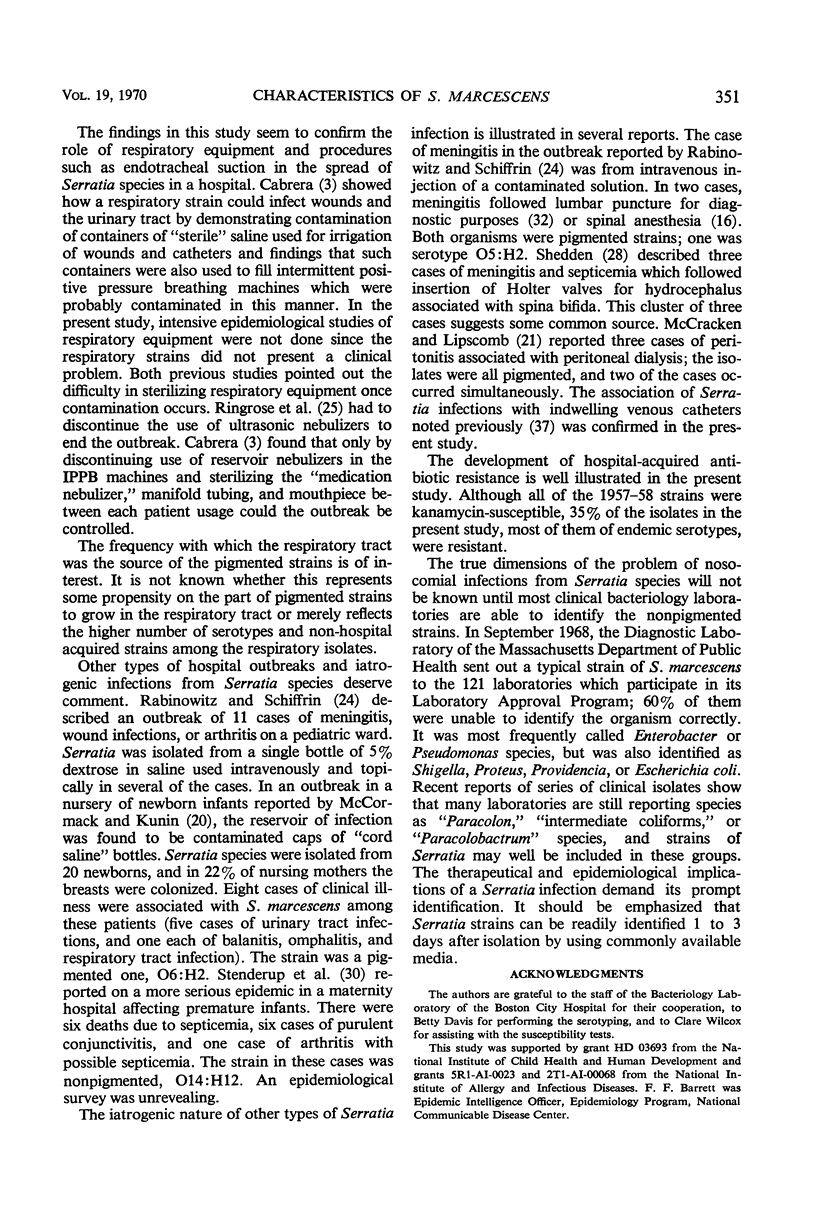
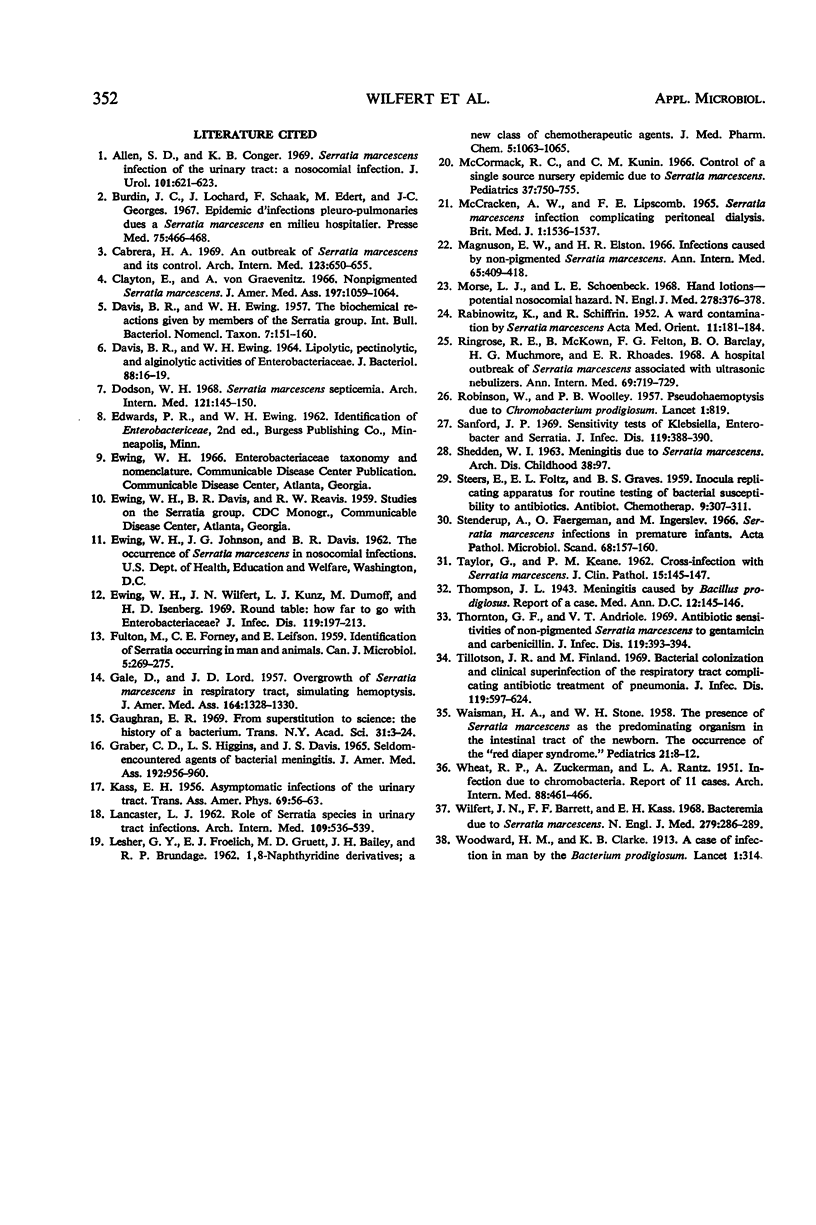
Selected References
These references are in PubMed. This may not be the complete list of references from this article.
- Allen S. D., Conger K. B. Serratia marcescens infection of the urinary tract: a nosocomial infection. J Urol. 1969 Apr;101(4):621–623. doi: 10.1016/s0022-5347(17)62391-7. [DOI] [PubMed] [Google Scholar]
- Burdin J. C., Lochard J., Schaack F., Edert M., Georges J. C. Epidémie d'infections pleuro-pulmonaires dues a "Serratia marcescens" en milieu hospitalier. Presse Med. 1967 Feb 25;75(10):466–468. [PubMed] [Google Scholar]
- Cabrera H. A. An outbreak of Serratia marcescens, and its control. Arch Intern Med. 1969 Jun;123(6):650–655. [PubMed] [Google Scholar]
- Clayton E., Von Graevenitz A. Nonpigmented Serratia marcescens. JAMA. 1966 Sep 26;197(13):1059–1064. [PubMed] [Google Scholar]
- DAVIS B. R., EWING W. H. LIPOLYTIC, PECTOLYTIC, AND ALGINOLYTIC ACTIVITIES OF ENTEROBACTERIACEAE. J Bacteriol. 1964 Jul;88:16–19. doi: 10.1128/jb.88.1.16-19.1964. [DOI] [PMC free article] [PubMed] [Google Scholar]
- Dodson W. H. Serratia marcescens septicemia. Arch Intern Med. 1968 Feb;121(2):145–150. [PubMed] [Google Scholar]
- Ewing W. H., Wilfert J. N., Kunz L. J., Dumoff M., Isenberg H. D. How far to go with Enterobacteriaceae? J Infect Dis. 1969 Feb;119(2):197–213. doi: 10.1093/infdis/119.2.197. [DOI] [PubMed] [Google Scholar]
- FULTON M., FORNEY C. E., LEIFSON E. Identification of Serratia occurring in man and animals. Can J Microbiol. 1959 Jun;5(3):269–275. doi: 10.1139/m59-032. [DOI] [PubMed] [Google Scholar]
- GALE D., LORD J. D. Overgrowth of Serratia marcescens in respiratory tract, simulating hemoptysis; report of a case. J Am Med Assoc. 1957 Jul 20;164(12):1328–1330. doi: 10.1001/jama.1957.62980120006007b. [DOI] [PubMed] [Google Scholar]
- GRABER C. D., HIGGINS L. S., DAVIS J. S. SELDOM-ENCOUNTERED AGENTS OF BACTERIAL MENINGITIS. JAMA. 1965 Jun 14;192:956–960. doi: 10.1001/jama.1965.03080240026005. [DOI] [PubMed] [Google Scholar]
- Gaughran E. R. From superstition to science: the history of a bacterium. Trans N Y Acad Sci. 1969 Jan;31(1):3–24. doi: 10.1111/j.2164-0947.1969.tb02887.x. [DOI] [PubMed] [Google Scholar]
- KASS E. H. Asymptomatic infections of the urinary tract. Trans Assoc Am Physicians. 1956;69:56–64. [PubMed] [Google Scholar]
- LANCASTER L. J. Role of Serratia species in urinary tract infections. Arch Intern Med. 1962 May;109:536–539. doi: 10.1001/archinte.1962.03620170034005. [DOI] [PubMed] [Google Scholar]
- LESHER G. Y., FROELICH E. J., GRUETT M. D., BAILEY J. H., BRUNDAGE R. P. 1,8-NAPHTHYRIDINE DERIVATIVES. A NEW CLASS OF CHEMOTHERAPEUTIC AGENTS. J Med Pharm Chem. 1962 Sep;91:1063–1065. doi: 10.1021/jm01240a021. [DOI] [PubMed] [Google Scholar]
- MCCRACKEN A. W., LIPSCOMB F. E. SERRATIA MARCESCENS INFECTION COMPLICATING PERITONEAL DIALYSIS. Br Med J. 1965 Jun 12;1(5449):1536–1537. doi: 10.1136/bmj.1.5449.1536. [DOI] [PMC free article] [PubMed] [Google Scholar]
- Magnuson C. W., Elston H. R. Infections caused by nonpigmented Serratia. Report of seven cases. Ann Intern Med. 1966 Sep;65(3):409–418. doi: 10.7326/0003-4819-65-3-409. [DOI] [PubMed] [Google Scholar]
- McCormack R. C., Kunin C. M. Control of a single source nursery epidemic due to Serratia marcescens. Pediatrics. 1966 May;37(5):750–755. [PubMed] [Google Scholar]
- Morse L. J., Schonbeck L. E. Hand lotions--a potential nosocomial hazad. N Engl J Med. 1968 Feb 15;278(7):376–378. doi: 10.1056/NEJM196802152780706. [DOI] [PubMed] [Google Scholar]
- RABINOWITZ K., SCHIFFRIN R. A ward-contamination by Serratia marcescens. Acta Med Orient. 1952 Oct;11(10):181–184. [PubMed] [Google Scholar]
- ROBINSON W., WOOLLEY P. B. Pseudohaemoptysis due to Chromobacterium prodigiosum. Lancet. 1957 Apr 20;272(6973):819–819. doi: 10.1016/s0140-6736(57)90978-9. [DOI] [PubMed] [Google Scholar]
- Ringrose R. E., McKown B., Felton F. G., Barclay B. O., Muchmore H. G., Rhoades E. R. A hospital outbreak of Serratia marcescens associated with ultrasonic nebulizers. Ann Intern Med. 1968 Oct;69(4):719–729. doi: 10.7326/0003-4819-69-4-719. [DOI] [PubMed] [Google Scholar]
- Sanford J. P. Sensitivity tests of klebsiella, enterobacter, and serratia. J Infect Dis. 1969 Apr-May;119(4):388–390. doi: 10.1093/infdis/119.4-5.388. [DOI] [PubMed] [Google Scholar]
- Stenderup A., Faergeman O., Ingerslev M. Serratia marcescens infections in premature infants. Acta Pathol Microbiol Scand. 1966;68(1):157–160. doi: 10.1111/apm.1966.68.1.157. [DOI] [PubMed] [Google Scholar]
- TAYLOR G., KEANE P. M. Cross-infection with Serratia marcescens. J Clin Pathol. 1962 Mar;15:145–147. doi: 10.1136/jcp.15.2.145. [DOI] [PMC free article] [PubMed] [Google Scholar]
- Thornton G. F., Andriole V. T. Antibiotic sensitivities of nonpigmented serratia marcescens to gentamicin and carbenicillin. J Infect Dis. 1969 Apr-May;119(4):393–394. doi: 10.1093/infdis/119.4-5.393. [DOI] [PubMed] [Google Scholar]
- Tillotson J. R., Finland M. Bacterial colonization and clinical superinfection of the respiratory tract complicating antibiotic treatment of pneumonia. J Infect Dis. 1969 Jun;119(6):597–624. doi: 10.1093/infdis/119.6.597. [DOI] [PubMed] [Google Scholar]
- WAISMAN H. A., STONE W. H. The presence of Serratia marcescens as the predominating organism in the intestinal tract of the newborn; the occurrence of the red diaper syndrome. Pediatrics. 1958 Jan;21(1):8–12. [PubMed] [Google Scholar]
- WHEAT R. P., ZUCKERMAN A., RANTZ L. A. Infection due to chromobacteria; report of 11 cases. AMA Arch Intern Med. 1951 Oct;88(4):461–466. doi: 10.1001/archinte.1951.03810100045004. [DOI] [PubMed] [Google Scholar]
- Wilfert J. N., Barrett F. F., Kass E. H. Bacteremia due to serratia marcescens. N Engl J Med. 1968 Aug 8;279(6):286–289. doi: 10.1056/NEJM196808082790604. [DOI] [PubMed] [Google Scholar]


